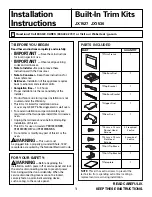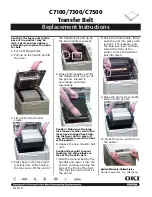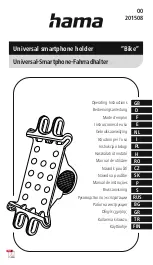
Stationary VRLA Batteries,
Installation and Operation Instructions
Page 6 of 16
w w w. b a e b a t t e r i e s u s a . c o m
R e v : 0 2 1 9
•
Small Cell Kit, H < 620 mm (24.4 in)
•
Large Cell Kit, min: L x W x H, 145 x 205 x 700 mm
(5.71 x 8.07 x 27.56 in)
max: L x W x H, 220 x 580 x 855 mm
(8.66 x 22.83 x 33.66 in)
weight: 250 kg (551.1 lbs)
See the specific battery lifting sling operating instructions for details on use.
NOTE: A mechanical battery lift may also be used to move the cells.
If your visual inspection, after unpacking, indicates damaged posts, cell covers or jars,
file a claim against the carrier and contact BAE USA or your local representative.
4.1 ACCESSORIES
When unpacking the cells, place the accessories along with the installation and operating
instructions in a safe location to avoid misplacement or loss. If you find any items listed
on the packing list are missing contact BAE USA or your local representative
immediately.
5.0 PRE-INSTALLATION PLANNING
We recommend that batteries not be installed in battery rooms that are still under
construction; this avoids the risk of damage to the batteries during construction.
The installation of the individual cells is dependent on the size and type of cell and the
intended application of the battery. Standard designs provide for installation in battery
cabinets, conventional vertical mount steel racks, horizontal mount racks for some
models, or seismic (earthquake resistant) racks for both vertical and horizontal mounting.
For all installation options, the ideal designs should include acid-resistant coatings and
rail insulation to ensure that the required insulation between the rack and battery is
present over the life of the batteries.
All racks should be properly aligned and all bolted parts tightened thoroughly before
placing the cells on them. Use levelers/shims to compensate for irregularities in the floor
surface.
5.1 RACKS (EXISTING RACK)
If the cells are to be installed on an existing battery rack, the following inspection should
be made prior to installation to avoid any possibility of damage to the new battery.
a) Inspect all bolted connections making sure they are all properly aligned and tightened.
b) Check all painted surfaces making sure everything is clean and free of corrosion.
c) Make sure the rail insulation is clean and in place.
If deficiencies are found with the existing rack - DO NOT INSTALL THE NEW CELLS
UNTIL CORRECTIVE ACTIONS ARE TAKEN.
If your inspection indicates that no corrective action is required, proceed with the cell/jar
installation (go to Section 6.0).



































